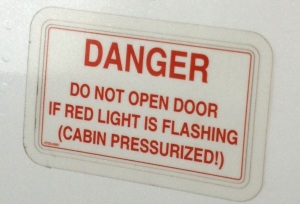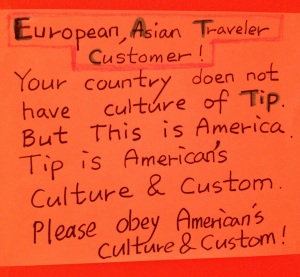You Can Refuse to Donate!
 This entirely amazing sign was sent by Wayne Norman.
This entirely amazing sign was sent by Wayne Norman.
Wayne tells me that this is at an official NC State Dept of Transport highway rest stop, 2 miles from the VA border on the I-85. It’s a weirdly verbose sign, and normatively complex.
As Wayne puts it:
They make it clear that they think something should be illegal, but that another branch of government won’t let them make it illegal. So they want to encourage you to take their normative attitude into your own hands, so to speak.












